
In Focus
Rajesh Pathak, Country Manager
India and SAARC, Accedian
Network performance monitoring lets CIOs maximize network’s potential, cut risks.
The scope of digital transformation is not just confined to the use of new technologies. Instead, this transformation encompasses a whole new journey that requires enterprises to maximize the potential of new-age technologies by obtaining complete network visibility across on-premise and cloud environments.
With continuous monitoring and deeper insights into various applications’ performance, IT professionals can proactively identify any network anomalies before they impact business operations and adapt to their users’ unique needs.
In a recent interaction with Jatinder Singh of Better World, Rajesh Pathak, Country Manager for India and SAARC, Accedian, outlines the key challenges faced by enterprises in their digital transformation journey and the role of network and application performance management solutions in the post-pandemic reality
Pathak also shares the best practices that organizations can adopt to convert the new normal position into the winning position.
Better World: The disruption caused by COVID-19 has compelled enterprises to reimagine their overall tech implementation strategies to meet the changing consumer expectations and remain competitive. What are the key challenges that enterprises are facing given this changing landscape?
Rajesh Pathak: The rapidly increasing number of new remote users has posed significant challenges for businesses. They have had to adjust by building and rebuilding capacity while controlling their networks 24/7. The distributed workforce has exacerbated this by increasing the number of endpoints, requiring specific performance and security management. (See: How is digital transformation shaping the new future?)
Companies need to be adaptable and flexible when scaling their networks as their business needs evolve. In short, the ability to rapidly deploy and accurately monitor services for performance and security while also maintaining SLAs consistently has become much more complicated. This challenge can be solved through greater visibility and insight into network and application performance. This type of technology solves for needs to be prioritized – it should no longer be written off as a capacity issue but critical to business continuity and success.
Better World: What is the importance of performance analytics in enabling enterprises to respond to the post-pandemic world?
Rajesh Pathak: As businesses continue to navigate these unprecedented times, network performance analytics has become a critical tool to manage disruption. Network and application performance management (NAPM) and security are pivotal to any business looking to optimize their network to maintain business continuity. It also is an essential part of preparing the network for the post-pandemic reality, whether that’s seeing an uplift in traffic, identifying a behavioral anomaly that might refer to a security issue, or pinpointing the cause of degradation. Businesses will want their networks to be ready to support enterprises and end-users in the post-COVID world.
Enterprises should turn to solutions that incorporate intelligent technologies such as artificial intelligence (AI) and machine learning (ML) to understand the customer experience better. These technologies can look at large amounts of data, analyze them in a fraction of a second that a human could, and identify patterns that help with network preparation and management. They’re a huge advantage in managing end-to-end services and can ensure enterprises remain competitive by offering guaranteed performance to their customers. (See: CIOs’ digital transformation focus accelerates recovery for IT firms)
Better World: With remote working environments likely to continue for a longer time, how can organizations securely accelerate their digital transformation initiatives?
Rajesh Pathak: Companies can continue on their path toward digital transformation. They need to do so safely. This means that every company should be adopting tools that help them become more cyber-resilient: the ability to prepare for, respond to, and recover from cyber-attacks. As we have seen this year, the distributed workforce has lent itself to more excellent opportunities for hackers, and it seems like every week, a new exploit or exposure is unearthed. A report from the fall of 2020 found that every endpoint connected to the Web faces 1.5 attacks per minute.
Rajesh Pathak, Country Manager, India and SAARC, Accedian
Rajesh Pathak is a transformational leader who believes in big picture thinking for exceptional results with over two decades of solid experience in both enterprise and service provider domains. At Accedian, a performance analytics and end-user experience solutions company, Rajesh Pathak shoulders a massive responsibility of accelerating Accedian’s growth plans in India and SAARC.
Before joining Accedian, Rajesh Pathak held leadership roles at BT India, Agnity, Alcatel-Lucent, and Ciena. He is an avid risk-taker and firmly believes that consistent hard work leads to success.
Expertise
- Leadership development, general management, and strategic leadership
- Mentoring and coaching
- Revenue growth, sales P&L
- Partnership and channel alliances
- Technical solution sales, business development
- Practice development
Education
- BE in Electronics and Telecommunications, Amravati University, 1992–96.
Many solutions need to be considered when it comes to cybersecurity, behavior-based intrusion detection. The tool utilizes network traffic analysis to view 100% of all transactions and identify behavioral anomalies raised to IT teams before affecting the end-user. Cyber-resiliency is about complete visibility across your network, which gives IT teams a greater understanding of patterns and trends in the traffic and sound insight into what might be out of the ordinary.
Better World: What are the key learnings that technology leaders can apply to unlock the true potential of their networks? How are you helping businesses in this direction?
Rajesh Pathak: Network and application performance monitoring (NAPM) gives control back to CIOs and allows them to understand and maximize their network’s potential while reducing risk. This is particularly important because networks are becoming more complex to manage, and CIOs oversee multiple environments, including cloud, private cloud, and legacy infrastructure. With NAPM, CIOs can monitor their network’s performance, identify outages that could cause bottlenecks, recognize potential security threats, pinpoint the root cause of issues in real-time, and resolve them quickly. This information will allow their workflows to be more efficient, customer experiences to be more seamless, and improved business outcomes.
Better World: Many of the AI-based implementations require cultural shifts to scale and collaborate. What are some of the best practices for businesses to adopt AI amid crisis?
Rajesh Pathak: Adopting new technology is only successful if you make sure your team is onboard the tools and is equipped with the proper knowledge to use them properly. This requires the development of a broad understanding of new tools through training and educational collateral. But it also requires a focus on creating a culture that supports this change. This is done through frequent company-wide communication, from the start of the process to the finish – have teams weigh in on new tech adoption, understanding the pain points that led to this and how the new tool can help with some of these challenges.
By bringing your people along with you, they’ll feel more invested in the technology from the start and will have a complete understanding of why it was adopted and how it can improve processes and work. Then, it’s about making sure they have the correct information to use it successfully, which eases the onboarding process and helps them see firsthand the value of tech from the moment they start using it.
Better World: What are your strategic focus areas for the Indian market this year?
Rajesh Pathak: India continues to be a growing market for us due to recent investments in tech infrastructure. It’s crucial to have this foundation to adopt the tools they need to stay agile and prioritize security. This past year, we saw a massive uptick in cyber breaches, making IT teams reconsider their tech stack as they navigated connecting distributed and remote end-users in a safe way.
In 2021, we look forward to continuing to bring expanded tools and services to the area, driven by technologies like cloud, AI, ML, and 5G. 5G, in particular, will prove significantly impactful, especially for enterprises looking to achieve rapid growth while working with the realities of distributed workforces. We believe that NAPM technology can fully transform how enterprises and end-users manage their workflows and will be a critical part of India’s role in the age of global business.


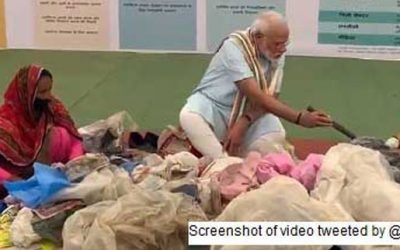

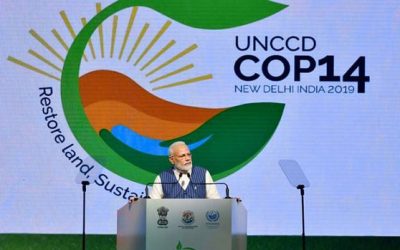
 The Prime Minister reaffirmed India’s commitment to addressing all the three main concerns of the Rio Conventions. He also stated that India has hosted global gatherings through the CoP’s for all the three Conventions. “Going forward, India would be happy to propose initiatives for greater South-South cooperation in addressing issues of climate change, biodiversity and land degradation,” he said.
The Prime Minister reaffirmed India’s commitment to addressing all the three main concerns of the Rio Conventions. He also stated that India has hosted global gatherings through the CoP’s for all the three Conventions. “Going forward, India would be happy to propose initiatives for greater South-South cooperation in addressing issues of climate change, biodiversity and land degradation,” he said. The Environment Minister pointed out that the COP14 has emerged as a global platform to discuss matters of great importance concerning the environment. “More than 190 Countries, 100 Ministers and 8000 participants from all across the globe came together to discuss and work on promotion of land restoration and climate resilience at UNCCD COP14,” he noted.
The Environment Minister pointed out that the COP14 has emerged as a global platform to discuss matters of great importance concerning the environment. “More than 190 Countries, 100 Ministers and 8000 participants from all across the globe came together to discuss and work on promotion of land restoration and climate resilience at UNCCD COP14,” he noted.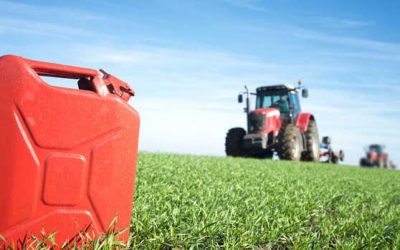


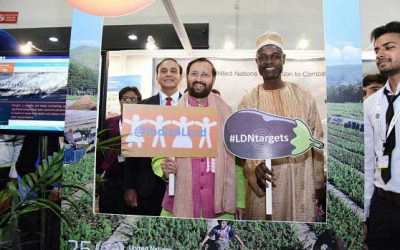

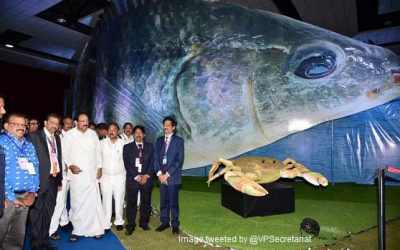

0 Comments